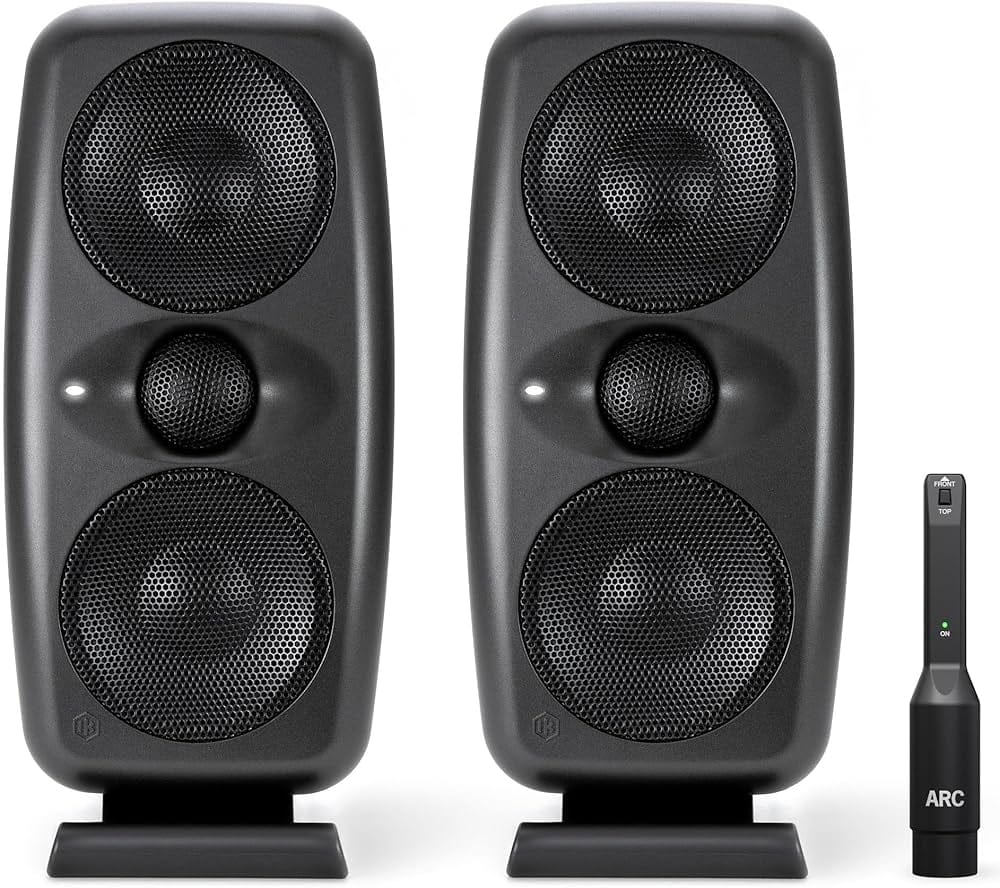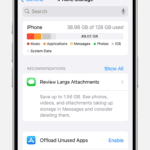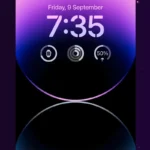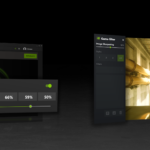The IK Multimedia iLoud MTM is a popular studio monitor known for its compact size and professional-grade sound. Yet, like any audio equipment, it can sometimes face issues. If you’re experiencing problems with your iLoud MTM, most can be solved with simple troubleshooting steps.
Sound quality or connection problems are common concerns for iLoud MTM users. You might encounter low volume, distorted audio, or no sound at all. These issues often stem from incorrect settings or faulty connections. The iLoud MTM user manual provides detailed guidance on addressing these problems.
When troubleshooting your iLoud MTM, start with the basics. Check all connections and ensure the volume is set correctly on both the monitor and your audio source. If problems persist, you may need to adjust the monitor’s position or calibrate it using the ARC system. For more complex issues, IK Multimedia’s support team can offer personalized assistance.
| Issue | Quick Fix |
|---|---|
| No sound | Check connections and volume |
| Distorted audio | Adjust input level |
| Low volume | Increase gain on monitor |
| Uneven sound | Recalibrate using ARC system |
Troubleshooting Your IK Multimedia iLoud MTM Monitors
The IK Multimedia iLoud MTMs are compact yet powerful studio monitors known for their accuracy and clarity. However, you might occasionally encounter issues. This guide helps you troubleshoot common problems.
Basic Checks
Before we dive into specific problems, let’s start with some simple checks:
- Power: Ensure both monitors are properly plugged in and the power outlets are working.
- Cables: Verify that the audio cables (TRS or XLR) are securely connected to both the monitors and your audio interface. Try different cables if you have spares.
- Volume Levels: Check the volume levels on your audio interface, computer, and the monitors themselves. Ensure nothing is muted.
- Input Selection: If your iLoud MTMs have multiple inputs, make sure you’ve selected the correct input source.
- Placement: Confirm the monitors are placed correctly on your desk or stands, avoiding obstructions that might affect the sound.
Common Issues and Solutions
Here’s a breakdown of common problems and potential solutions:
1. No Sound From One or Both Monitors
- Swap Cables: Try swapping the left and right audio cables to see if the problem follows the cable or stays with a specific monitor.
- Swap Inputs: If your monitors have multiple inputs, try a different input to rule out a problem with a specific input jack.
- Check Audio Interface: Ensure your audio interface is functioning correctly and that the correct output is selected.
- Check for Clipping: Look for clipping indicators on your audio interface or in your DAW. Excessive input levels can cause sound to cut out.
2. Distorted or Crackling Sound
- Reduce Volume: Lower the volume on your audio interface and monitors to see if the distortion disappears.
- Check Cable Connections: Ensure all cables are securely connected and there’s no damage to the connectors.
- Clean Input Jacks: Use contact cleaner to clean the input jacks on the monitors and your audio interface.
- Interference: Look for sources of electromagnetic interference that might be affecting the audio signal, such as mobile phones or Wi-Fi routers.
3. Low Volume or Lack of Bass
- Placement: Experiment with the placement of your monitors. Placing them too close to a wall can affect the bass response.
- Acoustic Treatment: Consider adding acoustic treatment to your room to improve the sound quality and reduce reflections.
- Calibration: Use the iLoud MTM’s built-in ARC System with the included microphone to calibrate the monitors to your room’s acoustics.
4. Humming or Buzzing Sound
- Ground Loops: Ground loops can cause humming or buzzing. Try using a ground loop isolator or different power outlets.
- Cable Quality: Poor quality cables can pick up interference. Try using shielded cables.
- Interference: Identify and eliminate potential sources of electromagnetic interference.
5. Bluetooth Connectivity Issues
- Pairing: Make sure your device is properly paired with the iLoud MTMs.
- Distance: Keep your device within the Bluetooth range of the monitors.
- Interference: Other Bluetooth devices or Wi-Fi networks can interfere with the connection.
Advanced Troubleshooting
- Firmware Updates: Check the IK Multimedia website for firmware updates for your iLoud MTMs. Updates can sometimes fix bugs or improve performance.
- Factory Reset: If other troubleshooting steps fail, you can try resetting the monitors to their factory settings (refer to the user manual).
IK Multimedia Support
- Website: Visit the IK Multimedia support website for FAQs, troubleshooting guides, and contact information.
- User Manual: Refer to the user manual that came with your monitors for more specific troubleshooting information.
- Customer Service: Contact IK Multimedia customer service via their website or by phone.
Tips for the Best iLoud MTM Experience
- Optimal Placement: Place the monitors at ear level and at an equal distance from your listening position.
- Acoustic Treatment: Use acoustic panels to minimize reflections and improve the accuracy of the sound.
- Calibration: Calibrate the monitors to your room using the ARC System.
- Proper Connections: Use high-quality cables and ensure they are securely connected.
- Volume Levels: Avoid excessive volume levels that can cause distortion or damage the speakers.
- Regular Cleaning: Keep the monitors clean and free of dust.
Setting Up Your iLoud MTM Studio Monitors
Proper setup of your iLoud MTM studio monitors is crucial for optimal sound quality and performance. Correct connections, positioning, and calibration will ensure you get the most out of these compact yet powerful speakers.
Understanding the iLoud MTM Connections
The iLoud MTM offers versatile audio inputs to suit your studio needs. On the rear panel, you’ll find XLR and TRS balanced inputs for professional audio equipment. A 3.5mm stereo input allows quick connection to consumer devices.
The USB port serves two purposes:
- Firmware updates
- Direct audio input from computers
Connect your audio source to the appropriate input. Use balanced connections when possible for the cleanest signal.
Ensure all cables are securely plugged in to avoid connection issues or signal loss.
Optimizing Listening Position
Proper speaker placement is key for accurate sound reproduction. Position the iLoud MTMs to form an equilateral triangle with your listening spot.
Aim the tweeters at ear level when seated. This ensures you hear the full frequency range accurately.
Keep the monitors away from walls and corners to minimize reflections. A distance of at least 8 inches is recommended.
Avoid placing objects between you and the speakers that could block or reflect sound.
Using the ARC Mic Input for Custom Calibration
The iLoud MTM features Advanced Room Correction (ARC) technology for optimized performance in your space.
To calibrate:
- Connect the ARC MEMS microphone to the ARC INPUT using the provided XLR/TS cable.
- Place the mic at your listening position.
- Press and hold the CAL/PRESET button for 3 seconds.
- Follow the on-screen prompts to complete the calibration process.
This custom calibration adjusts the speaker’s response to compensate for room acoustics.
Desktop Positioning and Volume Control Considerations
When using iLoud MTMs on a desk, consider these tips:
- Use the built-in tilt feature to angle the speakers upward towards your ears.
- Place acoustic isolation pads underneath to reduce vibrations.
The volume control is on the front panel for easy access. Start with a low volume and gradually increase to a comfortable listening level.
Remember to adjust both the speaker volume and your audio source volume for optimal gain staging.
| Positioning Tip | Benefit |
|---|---|
| Equilateral triangle | Balanced stereo image |
| Tweeters at ear level | Accurate high-frequency response |
| Away from walls | Reduced room reflections |
| Use tilt feature | Improved on-axis response for desktop use |
By following these setup guidelines, you’ll create an ideal listening environment for your iLoud MTM studio monitors.
Troubleshooting Common iLoud MTM Issues
The iLoud MTM studio monitors can experience various issues affecting audio quality and performance. Here are some practical solutions to address common problems users may encounter.
Resolving Audio Input Problems
Check all cable connections to ensure they’re securely plugged in. Use high-quality cables to minimize interference. If using the ARC MEMS microphone, verify it’s properly connected to the ARC INPUT on the back of the monitor.
Try different audio sources to isolate the issue. If the problem persists with multiple sources, the monitor’s input may be faulty. Adjust the input sensitivity switch on the back panel to match your audio source’s output level.
For digital inputs, ensure your audio interface settings match the iLoud MTM’s supported formats. If you hear distortion, lower the output level from your audio source.
Fixing Volume and Audio Clarity Issues
Start by checking the volume controls on both the iLoud MTM and your audio source. Ensure the monitors aren’t overloading by reducing the input signal strength.
Adjust the LF Extension and HF Filter settings on the back panel to fine-tune the sound. These can help compensate for room acoustics or personal preferences.
If you hear a high-pitched hiss, especially if it’s louder on one monitor, try the following:
- Use different power outlets
- Check for ground loop issues
- Update the firmware
Consider recalibrating the monitors using the ARC system if the sound seems off-balance or unclear.
Addressing Connectivity and Power Challenges
If your iLoud MTM won’t turn on, first check the power cable connection. Try a different power outlet or cable to rule out electrical issues.
For Bluetooth connectivity problems, ensure your device’s Bluetooth is on and within range. Forget the iLoud MTM from your device’s Bluetooth list and re-pair.
If the monitor keeps disconnecting or won’t pair, try resetting the Bluetooth module:
- Turn off the monitor
- Press and hold the Bluetooth button
- While holding, turn the monitor on
- Release when the LED flashes rapidly
Performing a Factory Reset
A factory reset can resolve many persistent issues. To perform a reset:
- Turn off the monitor
- Press and hold the CAL/PRESET button
- While holding, turn the monitor on
- Release when the front LED starts blinking
This will restore default settings, including volume, EQ, and input selection. You’ll need to reconfigure your preferences after the reset.
If problems continue after trying these steps, contact IK Multimedia support for further assistance. They can provide model-specific troubleshooting and determine if repairs are needed.
Optimizing the Acoustic Environment
Proper acoustic setup enhances the iLoud MTM’s performance. Adjusting filters and managing room acoustics can dramatically improve sound quality and accuracy.
Adjusting the HF Filter and LF Extension
The iLoud MTM offers customizable filters to match your space. The HF (High Frequency) filter helps balance treble response. You can adjust it to compensate for room reflections or personal preference.
The LF (Low Frequency) extension controls bass response. Set it to filter out frequencies below:
- 80 Hz (LFE)
- 60 Hz
- 50 Hz (default)
- 40 Hz
Choose based on your room size and subwoofer usage. Smaller rooms may benefit from higher cutoff frequencies to reduce bass buildup.
Managing Room Acoustics
Room treatment plays a crucial role in optimizing your iLoud MTM setup. Start by placing acoustic panels at first reflection points on walls and ceiling. This reduces early reflections that can muddy the sound.
Consider these steps:
- Use bass traps in corners to control low-end resonances
- Add diffusers on rear walls to scatter sound waves
- Place absorptive materials strategically to reduce echoes
The Desktop filter switch on the iLoud MTM can help compensate for placement near walls or on desks. It provides a +3.5dB boost between 1kHz and 10kHz and a -1dB reduction below 400Hz.
| Acoustic Element | Purpose | Placement |
|---|---|---|
| Bass Traps | Control low frequencies | Room corners |
| Absorption Panels | Reduce reflections | First reflection points |
| Diffusers | Scatter sound waves | Rear wall |
By combining proper speaker placement with room treatment and filter adjustments, you can achieve a more accurate listening environment for your iLoud MTM monitors.
Understanding the Privacy and Cookie Policy
The privacy and cookie policy governs how websites collect and use visitor data. It outlines the types of information gathered and how it’s utilized to improve user experiences.
Navigating Cookies and Tracking Technologies
Cookies are small text files stored on your device when you visit websites. They remember your preferences and login information. Tracking technologies like web beacons and pixels also collect data about your browsing habits.
Most sites use these tools to:
- Recognize returning visitors
- Save shopping cart contents
- Provide personalized recommendations
You can manage cookie settings in your browser. Options typically include:
- Accepting all cookies
- Blocking third-party cookies
- Deleting cookies after each session
| Cookie Type | Purpose | Example |
|---|---|---|
| Essential | Site functionality | Login info |
| Analytics | Traffic analysis | Page views |
| Advertising | Targeted ads | Product interests |
Ensuring a Personalized Content Browsing Experience
Websites use the data collected through cookies and tracking to tailor content to your interests. This creates a more engaging browsing experience. You’ll see articles, products, and ads relevant to your past activities.
Benefits of personalization include:
- Faster access to preferred content
- Relevant product recommendations
- Streamlined checkout processes
Some users worry about privacy implications. You can limit data collection by:
- Using private browsing modes
- Opting out of personalized ads
- Clearing cookies regularly
Websites must disclose their data practices. Read privacy policies to understand how your information is used and protected.
Frequently Asked Questions
IK Multimedia iLoud MTM monitors can face various issues. Here are solutions to common problems users encounter with these speakers.
How can I resolve connectivity issues with my IK Multimedia iLoud MTM monitors?
Check all cable connections. Ensure the power cable is firmly plugged in. Verify that audio cables are securely connected to both the monitors and your audio source. Try different cables to rule out faulty wiring.
If using Bluetooth, reset the connection. Turn off Bluetooth on your device, then turn it back on. Forget the iLoud MTM from your device’s Bluetooth list and re-pair.
What steps should I take if there is no sound coming from my iLoud MTM speakers?
First, check the volume settings on both the iLoud MTM and your audio source. Adjust the volume potentiometer on the monitor and the volume control on your device.
Verify that the correct input is selected on the iLoud MTM. Ensure your audio source is playing and not muted. Test with a different audio source to isolate the problem.
How do I update the firmware on my iLoud MTM monitors?
Visit the IK Multimedia website. Download the latest firmware for your iLoud MTM model. Connect the monitors to your computer via USB.
Run the firmware update utility. Follow the on-screen instructions to complete the update process. Do not disconnect the monitors during the update.
What can I do if my iLoud MTM monitors are not powering on?
Check the power cable connection. Try a different power outlet. Verify that the power switch is in the ON position.
If the issue persists, check the fuse. Replace it if necessary, following the manufacturer’s guidelines. If these steps don’t work, contact IK Multimedia support.
How do I calibrate the iLoud MTM speakers for my studio setup?
Use the ARC (Automatic Room Correction) system. Connect the ARC MEMS microphone to the ARC INPUT on the back of the iLoud MTM.
Place the microphone at your listening position. Press and hold the CAL/PRESET button for three seconds to start calibration. Follow the LED indicators to complete the process.
What should I check if the sound from the iLoud MTM speakers is distorted or unclear?
Lower the volume on both the speakers and your audio source. Check for any EQ settings that might be causing distortion. Ensure your audio files are high quality.
Verify that all cables are properly connected and not damaged. If using digital inputs, check the sample rate and bit depth settings on your audio interface.
| Issue | Quick Fix |
|---|---|
| No power | Check power cable and outlet |
| No sound | Verify volume and input selection |
| Distortion | Lower volume, check EQ settings |
| Connectivity | Inspect cables, reset Bluetooth |
| Poor sound quality | Calibrate with ARC system |







